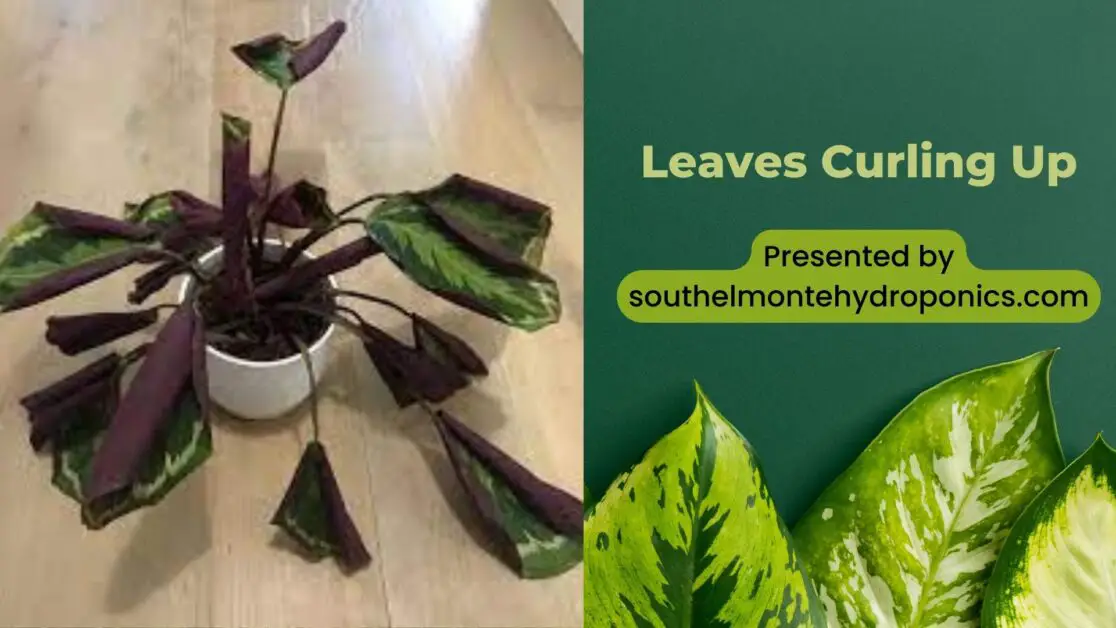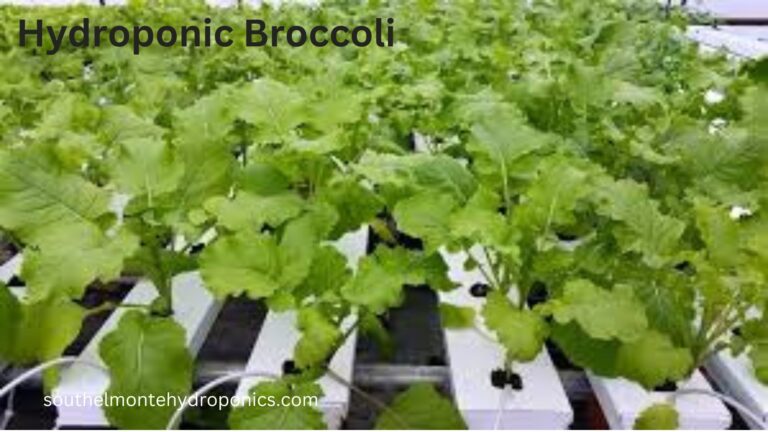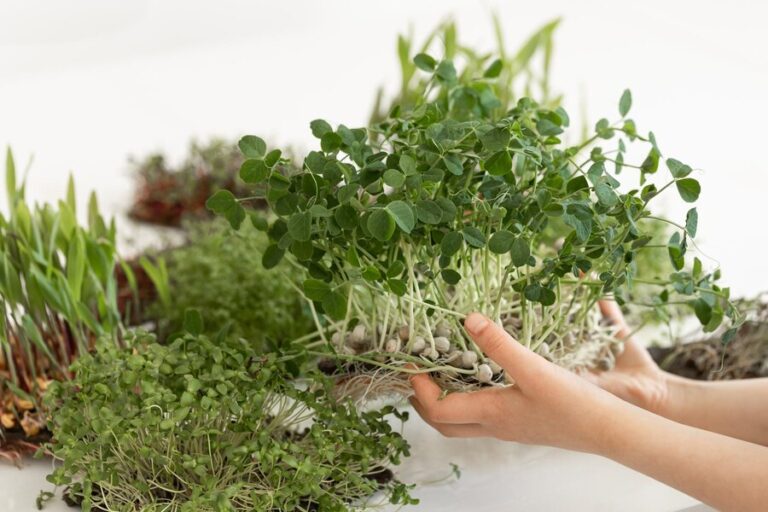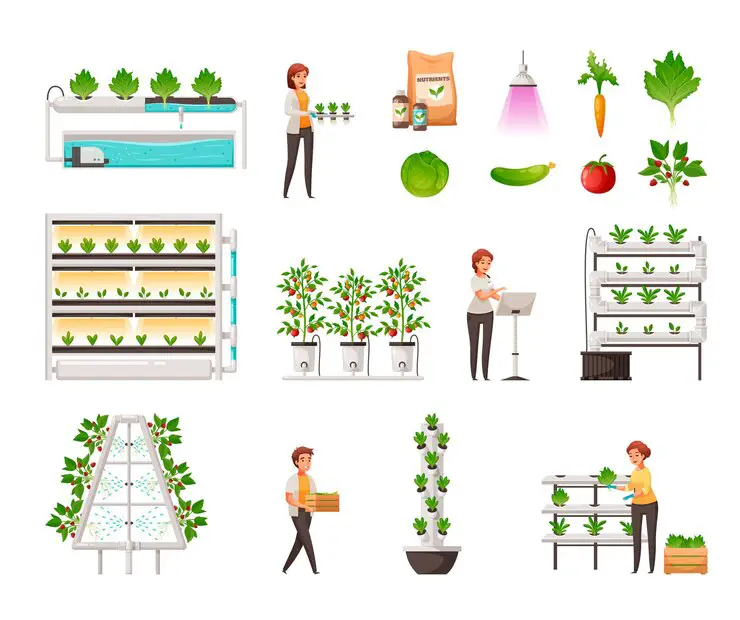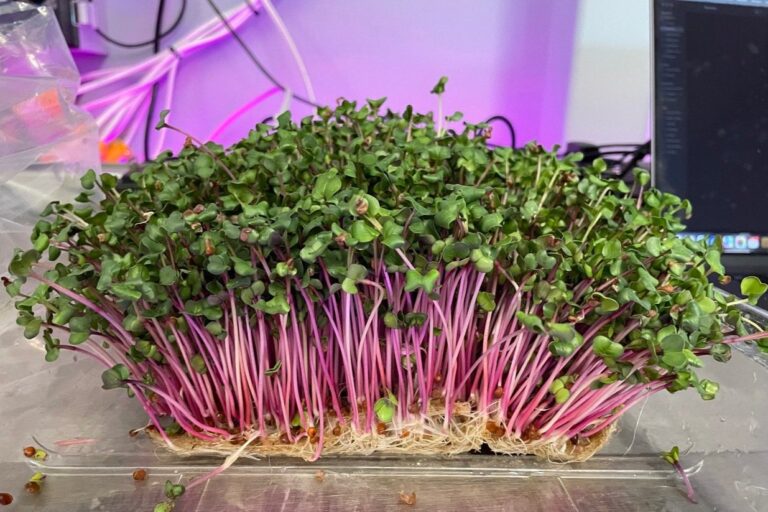Best Fixing Way for Leaves Curling Up: What It Means, What Causes It, and How to Fix It
Table of Contents
2. Leaves Curling Up: Identifying the Symptoms of Leaf Curling
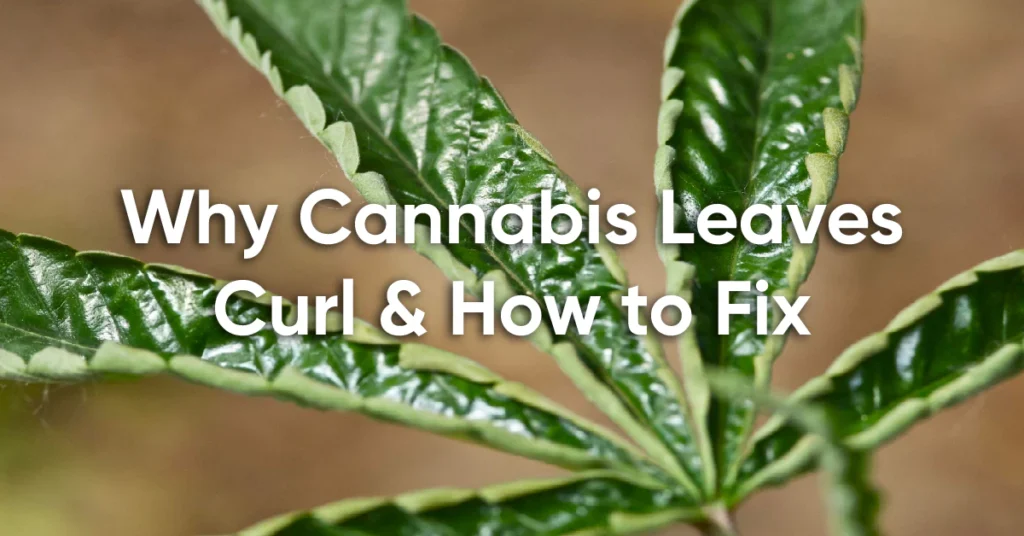
Leaves Curling Up is a common issue that many gardeners encounter, and it can be indicative of various underlying problems. Identifying the symptoms of leaf curling is crucial in order to address the issue effectively. One of the most evident signs of leaf curling is the inward or upward curling of the leaf edges. This can be easily observed by closely examining the affected leaves. Additionally, the leaves may appear distorted or crinkled, with a noticeable change in their overall shape and appearance.
In some cases, leaf curling may also be accompanied by discoloration or yellowing of the affected Leaves Curling Up. This can be an indication of nutrient deficiencies or imbalances in the plant’s system. It is important to note that leaf curling can vary in severity, ranging from mild curling to complete leaf roll, where the entire leaf curls tightly inward. By closely observing and identifying these symptoms, gardeners can take the necessary steps to diagnose and treat the underlying causes of leaf curling, ultimately preventing further damage to their plants for Leaves Curling Up.
3. Leaves Curling Up: Environmental Factors and Leaf Curling
Environmental factors play a crucial role in the appearance of leaf curling in plants. One common cause of leaf curling is excessive heat and sunlight. When exposed to high temperatures and intense sunlight, plants can experience heat stress, causing their leaves to curl and wilt as a protective mechanism. This is especially true for plants that are native to cooler climates and are not equipped to handle excessive heat.
Another environmental factor that can contribute to leaf curling is dry and low humidity conditions. When the air is dry, plants lose moisture through their leaves at a faster rate, leading to dehydration. As a response, the leaves curl inward to reduce the surface area that is exposed to the dry air, minimizing water loss. In such cases, providing adequate humidity or using techniques like misting can help prevent leaf curling caused by dry conditions.
It’s important to note that not all plants have the same tolerance levels for environmental stressors. Some species are more resilient and can withstand higher temperatures or lower humidity levels without experiencing significant leaf curling. On the other hand, certain plants are highly sensitive to even slight variations in their environment, making them more prone to leaf curling. Understanding the specific environmental requirements of your plants is crucial in maintaining their health and preventing leaf curling.
4. Nutritional Imbalances and Leaves Curling Up
Nutritional imbalances can have a profound impact on the health and vitality of plants, often manifesting in visible symptoms such as leaf curling. When plants suffer from a lack or excess of certain essential nutrients, their ability to carry out vital functions becomes compromised, leading to physiological imbalances that can result in leaf curling.
One common nutrient deficiency that frequently contributes to leaf curling is a lack of potassium. Potassium plays a crucial role in various plant processes, including water regulation, enzyme activation, and protein synthesis. When plants lack sufficient potassium, they struggle to maintain proper water balance, causing the leaves to curl as a protective response to prevent excessive water loss.
On the other hand, an excessive amount of certain nutrients, such as nitrogen, can also induce leaf curling. High levels of nitrogen promote vigorous vegetative growth, often at the expense of other essential nutrients. This imbalance can interfere with the development and structural integrity of leaves, leading to curling as the plant attempts to compensate for the nutrient overload.
Addressing nutritional imbalances requires a thorough understanding of a plant’s specific nutrient requirements and its ability to absorb and utilize these elements effectively. Testing the soil’s nutrient content, analyzing leaf tissue samples, and administering targeted fertilizer applications can help rectify any deficiencies or excesses, thus restoring the health and vigor of the plants and alleviating leaf curling.
5. Pests and Diseases Associated with Leaves Curling Up
Pests and diseases are common culprits when it comes to leaf curling in plants. Nematodes, aphids, and mites are just a few examples of pests that can wreak havoc on your garden. These tiny creatures feed on the sap of the leaves, causing them to curl and distort. In addition to pests, diseases such as powdery mildew and leaf blight can also lead to leaf curling. These diseases are caused by fungal infections and can spread rapidly if left untreated. It is important to regularly inspect your plants for any signs of pests or diseases and take appropriate action to prevent leaf curling.
In order to effectively manage pests and diseases associated with leaf curling, it is essential to practice good garden hygiene. Remove any dead or diseased plant material from your garden, as these act as breeding grounds for pests and diseases. Regularly monitor your plants for any signs of pests or diseases, such as discolored or distorted leaves, webbing, or sticky residue. If you do notice any issues, consider using organic pest control methods, such as introducing beneficial insects or using homemade insecticidal soaps. For more severe infestations or infections, chemical-based solutions may be necessary, but always read and follow label instructions carefully. By staying vigilant and taking proactive measures, you can effectively manage pests and diseases, minimizing the risk of leaf curling in your plants.
6. Watering Issues and Leaves Curling Up
Watering is a vital aspect of plant care, and improper watering practices can lead to various problems, including leaf curling. Overwatering is a common issue that can cause leaves to curl. When plants receive excessive amounts of water, their roots become oxygen-deprived, leading to stress and physiological imbalances. As a result, the leaves curl as a defensive response, reducing the surface area exposed to the excess moisture. It is crucial to provide plants with adequate water, maintaining a balance that allows for proper root respiration while avoiding waterlogged conditions.
On the other hand, underwatering can also contribute to leaf curling. When plants do not receive sufficient water, they struggle to transport nutrients effectively, leading to stress and dehydration. As a survival mechanism, plants may curl their leaves to minimize water loss through transpiration. To prevent underwatering, it is essential to regularly check the moisture levels of the soil and provide sufficient water when needed. Proper watering practices can help maintain optimal plant health and minimize leaf curling issues.

7. Effects of Temperature on Leaves Curling Up
Temperature plays a significant role in the health and well-being of plants, and it can have a profound effect on leaf curling. Extreme temperatures, either hot or cold, can cause leaf curling as plants try to protect themselves from the stress. High temperatures, especially in combination with low humidity, can cause the leaves to curl inward in an attempt to reduce surface area and conserve moisture. On the other hand, cold temperatures can cause leaves to curl inward to minimize exposure and decrease heat loss. It is important for gardeners to understand the temperature preferences of their plants and provide suitable conditions to prevent leaf curling.
In addition to extreme temperatures, fluctuations in temperature can also contribute to leaf curling. Rapid changes between hot and cold temperatures can shock the plants, leading to leaf curling as a defense mechanism. Sudden drops in temperature, such as during frost or cold snaps, can cause the cells in the leaves to contract and result in curling. Similarly, rapid increases in temperature, especially in a short period, can cause stress and trigger leaf curling. It is crucial to maintain stable and consistent temperatures in the garden to minimize the risk of leaf curling due to temperature fluctuations. Regular monitoring and adjustment of the growing environment can help prevent issues related to temperature and promote healthier plant growth.
8. Leaves Curling Up in Different Plant Species
Leaf curling is a common issue that can affect various plant species, each exhibiting unique characteristics and responses. Understanding how different plants respond to leaf curling is crucial in determining the appropriate measures to address the issue effectively.
One example of a plant species prone to leaf curling is the tomato plant (Solanum lycopersicum). When affected, tomato leaves may present downward curling, along with leaf yellowing and stunted growth. This phenomenon is often attributed to environmental factors such as high temperatures, low humidity, and excessive sunlight exposure. Additionally, tomato plants may fall victim to pests and diseases such as aphids, whiteflies, and fungal infections, which can further exacerbate leaf curling.
On the other hand, fruit tree species like peaches (Prunus persica) and apricots (Prunus armeniaca) may also display leaf curling, but their causes differ from those affecting tomato plants. For these species, leaf curling is primarily associated with a fungal pathogen called Taphrina deformans. This fungus infests the leaf buds during the dormant period, leading to curling, red discoloration, and distorted growth. Orchards and gardens with a history of Taphrina deformans infections should implement preventive measures such as dormant oil applications and timely removal of infected leaves to mitigate the spread and severity of leaf curling.
It is essential for gardeners and plant enthusiasts to recognize the plant species they are working with and understand how each species responds to leaf curling. By doing so, they can tailor their care and management strategies accordingly, mitigating the effects of leaf curling and ensuring the health and vitality of their plants.
9. Preventive Measures for Leaves Curling Up
Preventing leaf curling in plants is essential to maintaining their overall health and vitality. By taking preemptive measures, you can avoid the unsightly appearance of curled leaves and ensure that your plants thrive in optimal conditions.
One of the key preventive measures is providing appropriate environmental conditions for your plants. Ensure that they are placed in an area with adequate sunlight or shade, depending on their specific requirements. Additionally, maintain proper air circulation around the plants by avoiding overcrowding and regularly pruning any overlapping branches or foliage. These steps can reduce humidity levels, preventing the risk of fungal infections and subsequent leaf curling.
Another crucial preventive measure is maintaining a balanced nutritional regime for your plants. Conduct periodic soil tests to determine any nutrient deficiencies or imbalances. Supplement the soil with organic matter such as compost or well-rotted manure to improve its structure and fertility. Moreover, provide your plants with a well-balanced fertilizer, following manufacturer instructions, to ensure they receive the necessary nutrients for healthy growth. Proper nutrition will strengthen the plants’ immune system and decrease the likelihood of leaf curling due to deficiencies or excesses of essential elements.
10. Treating Leaves Curling Up: Organic Methods
One of the most effective ways to treat leaf curling in plants is through the use of organic methods. These methods are not only environmentally friendly but also help to promote overall plant health. One popular organic solution is the use of neem oil. Neem oil is derived from the seeds of the neem tree and has been used for centuries as a natural pesticide and fungicide. It works by smothering and suffocating pests, while also inhibiting the growth of fungi and bacteria. To apply neem oil, mix it with water according to the instructions on the bottle and spray it on the affected leaves. This treatment should be repeated every seven to ten days until the leaf curling subsides.
Another organic method for treating leaf curling is the use of compost tea. Compost tea is made by soaking compost in water and allowing it to steep for a period of time. This creates a nutrient-rich liquid that can be sprayed onto the plant leaves. Compost tea not only provides essential nutrients to the plant, but it also enhances the microbial activity in the soil, which in turn boosts the plant’s immune system. To make compost tea, place a handful of compost into a cloth bag and submerge it in a bucket of water. Let it steep for 24 to 48 hours, then strain the liquid and dilute it with water. Spray the compost tea on the affected leaves to promote healthy growth and reduce leaf curling.
11. Treating Leaves Curling Up: Chemical-Based Solutions
Chemical-based solutions can be an effective way to treat leaf curling in plants, providing immediate relief and promoting recovery. One commonly used chemical solution is a fungicide, which targets fungal infections that can cause leaf curling. Fungicides containing active ingredients such as copper or sulfur can help control fungal growth and prevent further damage to the leaves. It is essential to carefully follow the instructions provided by the manufacturer to ensure proper application and minimize any potential adverse effects.
In addition to fungicides, insecticides can be another chemical-based solution for treating leaf curling caused by pest infestations. Insects like aphids, mites, and whiteflies can cause leaf curling by feeding on the plant’s sap or transmitting diseases. Using an appropriate insecticide can help eliminate these pests and alleviate the stress on the plant. However, it is important to identify the specific type of pests affecting the plant and choose an insecticide that is effective against them. Regular monitoring and early intervention can significantly improve the chances of successful treatment with chemical-based solutions.

12. Proper Care and Maintenance for Healthy Leaves
Proper care and maintenance are essential for maintaining healthy leaves in your garden. By following a few simple steps, you can ensure that your plants thrive and display vibrant foliage.
First and foremost, it is crucial to provide your plants with the necessary nutrients. This can be done by choosing the appropriate fertilizers and ensuring that they are applied according to the recommended guidelines. Different plants have different nutrient requirements, so it is essential to choose a fertilizer that suits the specific needs of your vegetation.
In addition to proper fertilization, watering plays a vital role in leaf health. It is important to water your plants consistently and avoid overwatering or underwatering. Consistent moisture levels promote healthy leaf growth and minimize the risk of diseases or pests.
Furthermore, pruning is a key aspect of leaf care. Regularly removing dead or damaged leaves not only improves the aesthetic appeal of your plants but also allows for better air circulation, reducing the risk of fungal infections.
Maintaining a weed-free garden also contributes to the health of your leaves. Weeds compete with plants for nutrients and sunlight, stunting their growth and potentially causing leaf curling. Regularly removing weeds through manual pulling or using appropriate herbicides ensures that your plants receive the necessary nutrition and light to thrive.
Lastly, it is crucial to monitor and address any signs of pests or diseases promptly. Regularly inspecting the leaves for any discoloration, spots, or unusual signs can help identify potential issues early on. Taking immediate action, such as using organic pest control methods or contacting a professional for assistance, can safeguard your plant’s health and prevent leaf curling.
By following these guidelines for proper care and maintenance, you can promote healthy leaf growth and ensure that your garden is a lush and vibrant space. Implementing these practices not only benefits your plants but also rewards you with a visually appealing and thriving garden.
13. Conclusion: Ensuring Leaf Health and Vitality for Leaves Curling Up
Leaf curling is a common issue that many gardeners face, but with the right knowledge and preventive measures, you can ensure the health and vitality of your plants’ leaves. By understanding the various factors that can contribute to leaf curling, such as environmental conditions, nutritional imbalances, pests and diseases, watering issues, and temperature fluctuations, you can take proactive steps to mitigate these issues. Additionally, it is crucial to identify the specific needs of different plant species, as they may have unique requirements for optimum leaf health. By providing proper care and maintenance, including regular monitoring, timely intervention, and appropriate organic or chemical-based treatments when necessary, you can create an environment that promotes strong and vibrant leaves.
Prevention is key when it comes to ensuring leaf health and vitality. By practicing good gardening habits, such as maintaining optimal soil conditions, providing sufficient water and nutrients, and implementing effective pest and disease control measures, you can minimize the risk of leaf curling. Regular inspections of your plants for any signs of distress or early symptoms can help you identify issues before they escalate. Additionally, seeking expert advice from horticulturists, participating in gardening forums, or attending workshops on plant care can provide valuable insights and strategies to maintain healthy leaves. Remember, healthy leaves not only contribute to the overall visual appeal of your garden but also play a crucial role in the photosynthesis process, which is essential for plant growth and development.
A details video for Leaves Curling Up:
Certainly! Here’s a table outlining potential causes and solutions for leaves curling up in plants:
| Possible Cause | Description | Solutions |
|---|---|---|
| Water Stress | Description: Underwatering or overwatering can lead to stress, causing leaves to curl. | Solutions: Adjust watering frequency and ensure proper soil moisture levels. Consider the specific needs of the plant. |
| Improper Temperature | Description: Extreme temperatures, whether too hot or too cold, can stress plants and result in curled leaves. | Solutions: Provide adequate shade, insulation, or adjust environmental conditions to maintain optimal temperature ranges. |
| Pests or Diseases | Description: Infestations by pests (such as aphids or spider mites) or diseases can cause leaves to curl. | Solutions: Identify and treat pests or diseases promptly using appropriate measures, such as insecticidal soap or fungicides. |
| Nutrient Deficiency | Description: Lack of essential nutrients, such as nitrogen, potassium, or magnesium, can lead to leaf curling. | Solutions: Fertilize the plant with a balanced fertilizer or amend the soil with the lacking nutrients. |
| Root Issues | Description: Problems with the root system, such as root rot or compacted soil, can affect water uptake and lead to curled leaves. | Solutions: Improve soil drainage, address root rot issues, and ensure a healthy root environment. |
| Chemical Exposure | Description: Exposure to certain chemicals, including pesticides or herbicides, can cause leaf curling as a response to stress. | Solutions: Avoid chemical exposure, follow proper application guidelines, and allow time for the effects to subside. |
| Genetic Factors or Natural Leaf Curling | Description: Some plants naturally exhibit curled leaves as part of their growth pattern or genetics. | Solutions: If the curling is normal for the plant species, no specific action may be needed. Understand the natural characteristics of the plant. |
Identifying the specific cause of leaf curling is essential for implementing targeted solutions. Regular monitoring, proper care practices, and prompt intervention can help maintain the health of plants and minimize leaf curling issues.
Please note that these headings are just suggestions and can be modified or expanded upon to suit the specific needs and content of your blog.
When writing an article, it is important to consider the headings as suggestions that can be customized to meet the specific needs and content of your blog. By tailoring the headings, you can create an article that addresses the interests and concerns of your readers, providing them with relevant and valuable information. Whether you choose to delve into the symptoms of leaf curling, explore the environmental factors that contribute to it, or discuss the various pests and diseases associated with this issue, the key is to offer accurate and well-researched insights that will help gardening enthusiasts effectively address leaf curling in their plants. By modifying and expanding upon the headings, you can ensure that your article is informative, engaging, and tailored to your audience’s needs.
How can I identify the symptoms of Leaves Curling Up in plants?
Leaf curling can manifest as wilting, curling or rolling of leaves, yellowing or discoloration, and stunted growth.
What environmental factors can cause Leaves Curling Up in plants?
Environmental factors such as extreme temperatures, low humidity, excessive sunlight, and strong winds can contribute to leaf curling.
Can nutritional imbalances lead to Leaves Curling Up in plants?
Yes, nutritional imbalances, particularly deficiencies in essential nutrients like nitrogen, potassium, or magnesium, can cause leaf curling.
Are there any pests or diseases associated with Leaves Curling Up in plants?
Yes, certain pests like aphids, mites, or whiteflies, as well as diseases like viruses or fungal infections, can result in leaf curling.
How does watering issues affect Leaves Curling Up in plants?
Overwatering or underwatering can both lead to leaf curling. Overwatering can cause root rot, while underwatering can lead to dehydration and curling.
What effects does temperature have on leaf curling?
Extreme temperatures, both hot and cold, can cause leaf curling. High temperatures can lead to dehydration, while cold temperatures can cause damage to cells.
Does leaf curling occur in all plant species?
Leaf curling can occur in various plant species, but some plants are more susceptible to it than others.
What preventive measures can I take to avoid leaf curling in plants?
To prevent leaf curling, ensure proper watering, maintain balanced nutrition, provide adequate shade and protection from harsh weather, and practice good hygiene to prevent pests and diseases.
Are there any organic methods to treat leaf curling in plants?
Yes, organic methods include adjusting watering habits, improving soil fertility, using natural pest control methods, and providing proper environmental conditions.
Can chemical-based solutions be used to treat leaf curling?
Chemical-based solutions, such as pesticides or fungicides, may be used to treat leaf curling caused by pests or diseases. However, they should be used cautiously and according to the instructions.
What care and maintenance practices can promote healthy leaves and prevent leaf curling?
Proper care and maintenance practices include regular watering, providing sufficient sunlight, monitoring and correcting nutrient imbalances, and promptly addressing any pest or disease issues.
How important is it to ensure leaf health and vitality?
Ensuring leaf health and vitality is crucial for overall plant health and productivity. Healthy leaves are essential for photosynthesis, nutrient absorption, and efficient growth.
Can leaf curling be completely prevented or treated?
Leaf curling can be effectively prevented or treated by identifying the underlying cause and taking appropriate measures. However, the success of prevention or treatment may vary depending on the specific situation and plant species.

